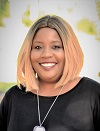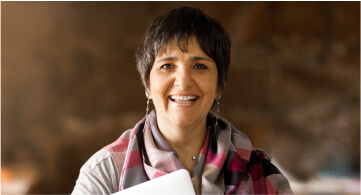Overview
By the end of this unit you should be able to:
o describe indicators of a paradigm shift toward a more inclusive campus.
o list key steps in the Inclusive Campus Model and how they can contribute toward making a campus more inclusive.
o list stakeholders and their potential roles in promoting UDHE practices campus-wide.
o give examples of promoters and inhibitors with respect to the institutionalization of UDHE.
o apply promising practices for institutionalizing UDHE practices.
A Model for the Institutionalization of UD
Based on the potential dimensions of a framework covered in Chapter 2 of the textbook I developed the following model that could be used to justify and plan the application of UD to teaching, physical spaces, services, IT or an entire institution. It can also be used to guide diversity, equity, and inclusion initiatives in a department or campus-wide. I will describe each element that appears in the framework image in the text that appears below it and elaborate on it in Chapter 8 of the textbook.
SEE ATTACHED IMAGE (UDHE Model Image)
Values
Values that support inclusive practices such as UD include
- excellence
- diversity
- social justice
Goals
Goals that support UD practices include
- equity
- inclusion
- compliance
Approaches
Approaches to ensuring inclusion include universal design and accommodations, which each require that the following be addressed:
- definitions
- principles
- guidelines
- processes
- stakeholders
Inputs
Applying UD systemically benefits from adequate
- top-down support
- bottom-up support
- staffing
- funding
Practices
Practices to implement UD include training and outreach tailored to the institution, culture, policies, and unit functions.
Outputs and Outcomes
Instruments and procedures should be developed and applied; the results should be analyzed to measure outputs (e.g., number of faculty trained) and outcomes (e.g., changes toward more inclusive teaching practices); and results should be reported and used to make adjustments to future efforts.
Impact
The impact of UD practices should be measured with respect to:
- equity
- inclusion
- compliance
For an institution of higher education, application of the model could read something like this:
Because “FirstRateUniversity” values excellence, diversity and social justice and has as its goals equity, inclusion and compliance, we employ universal design and accommodation definitions, principles and guidelines, and processes determined with the engagement of key stakeholders; apply strategies that are both top-down and bottom-up with adequate staffing and funding levels; and offer training and outreach and other best practices that are tailored to our institution’s culture, policies, and functions. We measure our progress in these efforts FirstRateUniversity and, as appropriate, revise our strategies to ensure that our campus meets our goals of equity, inclusion, and compliance.
The model should be reviewed and fine-tuned to better reflect the framework being applied for a specific application.
How do you think this model could be improved or what other model might be better to represent the institutionalization of UD?
READ Chapter 8 of the textbook for details on how this model was developed and how it can be applied.
(c) 2017- Sheryl Burgstahler. All rights reserved.
Promoters and Inhibitors of Change
Promoters and inhibitors of UD in higher education can be found in areas that include:
- Vision
- Change
- Championship
- Awareness
- Attitudes
- Diversity efforts
- Equity
- Time & cost
- Research
- Market forces
- Legislation and litigation
In Chapter 8, pay particular attention to how these areas can promote or inhibit change toward a more inclusive campus.
Can you think of promoters or inhibitors not covered in this chapter?
What could roles of various stakeholders be in transforming a campus to taking a UD approach to diversity, equity, and inclusion?
(c) 2017- Sheryl Burgstahler. All rights reserved.
~ END OF PART 1 RESOURCES ~
UD of Campus Units
It is difficult to institutionalize UD within a campus or campus unit. Below are two examples of what institutionalization might look like in a program and in an academic unit.
(1) Institutionalizing UD in a Distance Learning Program
About twenty postsecondary institutions participated in a case study to explore ways to systematically incorporate UD in a distance learning (DL) program. They came up with the following DL Program Accessibility Indicators:
1)The distance learning home page is accessible to individuals with disabilities.
2)A statement about the dl program’s commitment to accessible design for all potential students, including those with disabilities, is included prominently in appropriate publications and websites along with contact information for reporting inaccessible design features.
3)A statement about how dl students with disabilities can request accommodations is included in appropriate publications & web pages.
4)A statement about how people can obtain alternate formats of printed materials is included in publications.
5)The online and other course materials of distance learning courses are accessible to individuals with disabilities.
6)Publications and web pages for distance learning course designers include:
(a) a statement of the program’s commitment to accessibility,
(b) guidelines/standards regarding accessibility, and
(c) resources.
7)Accessibility issues are covered in regular course designer training.
8)Publications and Web pages for distance learning instructors include:
(a) a statement of the distance learning program’s commitment to accessibility,
(b) guidelines/standards regarding accessibility, and
(c) resources.
9)Accessibility issues are covered in training sessions for instructors.
[OPTIONAL] For more information about this project consult the following publication.
Steps Toward Making Distance Learning Accessible to Students and Instructors with Disabilities OR http://itd.athenpro.org/volume11/number1/burgstahler.html
(2) Institutionalizing UD in an Academic Department
In making an academic department more inclusive, consider:
- Planning, policies, & evaluation
- Facility & environment
- Support services
- Information resources
- Courses & faculty
- Computers, software, & assistive technology
READ https://www.washington.edu/doit/equal-access-universal-design-academic-department OR SEE ATTACHED PDF (Equal Access: Universal Design of an Academic Department)
View the video and corresponding publication/checklist at the link below.
Equal Access: Universal Design of an Academic Department (Links to an external site.) OR
https://www.washington.edu/doit/videos/index.php?vid=65&s=Academic+Department
These examples share how UD can be instituted in a program or other unit. What organizations do you know of that would benefit from applying UD in everything they do?
(c) 2017- Sheryl Burgstahler. All rights reserved.
Institutionalizing UD Practices Campus-wide
We’ve discussed ways to apply and promote UD. Institutionalization requires that we take a systemic view. Several years ago a project was undertaken by many of the authors of chapters in your textbook. More than twenty postsecondary school leaders answered the question, what would be the characteristics of a campus that embraced the UD paradigm? In the paragraphs below I describe what they came up with after an iterative process which considered their suggestions.
Creating an Inclusive Campus
Characteristics of campuses that embrace UD include:
University conversations:
§ Institution-level mission, vision, & values statements are inclusive of all people, including those with disabilities.
§ Disability is included in campus discussions of and training on diversity & special populations.
Administrative empowerment:
§ Policies, procedures, and practices are regularly reviewed for barrier removal and inclusivity of people with a diverse range of characteristics, including disability.
§ Administrators, staff, faculty, and student leaders are trained & empowered to take action around UD issues.
§ People with disabilities and other types of diversity are visible on campus including in positions of power or authority (administrators, faculty, student leaders, etc.).
Infusion in all aspects of campus:
§ Budgeting reflects the reality of the cost of UD and of accommodating current and prospective employees, students, and visitors with disabilities.
§ Measures of student success (retention, course completion, graduation, etc.) are the same for all student populations, including students with disabilities, & institutional research includes this data.
§ Campus marketing, publications, and public relations include images & content related to disabilities.
§ Campus publications & websites, including web-based courses, meet established accessibility standards.
§ Disability issues are regularly included as a component of the curriculum.
§ All campus facilities are physically accessible.
VIEW the following video can be used to convince high-level administrators to adopt practices that support the universal design of IT campus-wide. There is a long and short version of this product; you can choose which one you want to watch.
IT Accessibility: What Campus Leaders Have to Say (15-minute Version) (Links to an external site.)Links to an external site. OR http://www.washington.edu/doit/videos/index.php?vid=55
IT Accessibility: What Campus Leaders Have to Say (6-minute Version) (Links to an external site.)Links to an external site. OR http://www.washington.edu/doit/videos/index.php?vid=56
READ textbook chapter 8.
What additional ideas can you come up with to promote the institutionalization of UD?
(c) 2017- Sheryl Burgstahler. All rights reserved.
~ END OF PART 2 RESOURCES ~
PART 1: Promoters and Inhibitors (1 page Total)
BE VERY SPECIFIC AND FOCUSED HERE!
Tell what you think is the #1 promoter and the #1 inhibitor for the widespread adoption of universal/inclusive design on a postsecondary campus? Why?
Include a REFLECTION/ANALYSIS OF 100 – 150 WORDS (1 page Total – fill the page) Include at least TWO references to a book chapter or an article. Be sure to include references, in APA format – DON’T NOT REUSE CITATIONS
Your responses should be SUBSTANTIVE: they should demonstrate a serious engagement with the text(s)/video(s),etc. all claims you make should be fully and completely explained and claims about what the text says should be backed with PROPER quotations and/or evidence from the text and or reflections of the videos. Be sure to provide enough reference information in your responses so that we can find the page/quotation/etc. that you are referring to or discussing in your responses. YOU MAY NOT USE ANY OUTSIDE SOURCES – ONLY WHAT IS PROVIDED.
PART 2: Institutionalization (1.5 pages Total)
BE VERY SPECIFIC AND FOCUSED HERE!
In an institution/organization where you work or otherwise engage now or in the past, make a recommendation for at least 3 good steps this unit could take to be more welcoming and accessible to people with disabilities and/or other underrepresented or underserved groups.
Include a REFLECTION/ANALYSIS OF 2 PARAGRAPHS (1.5 pages Total) Include at least TWO references to a book chapter or an article. Be sure to include references, in APA format – DON’T NOT REUSE CITATIONS
Your responses should be SUBSTANTIVE: they should demonstrate a serious engagement with the text(s)/video(s),etc. all claims you make should be fully and completely explained and claims about what the text says should be backed with PROPER quotations and/or evidence from the text and or reflections of the videos. Be sure to provide enough reference information in your responses so that we can find the page/quotation/etc. that you are referring to or discussing in your responses. YOU MAY NOT USE ANY OUTSIDE SOURCES – ONLY WHAT IS PROVIDED.
PART 3: Professional Development of Faculty and Staff (1.5 pages Total) BE VERY SPECIFIC AND FOCUSED HERE!
Today there are many professional development efforts to help faculty and staff learn to work effectively with students from various groups—women, racial/ethnic minorities, English language learners, people with disabilities.
Share your opinion about whether these specific topics should be:
(1) combined into one professional development opportunity on working with individuals with diverse characteristics or
(2) taught separately? What would be gained and what would be lost in comparing the two options?
Include a REFLECTION/ANALYSIS OF 2 PARAGRAPHS (1.5 pages Total) Include at least TWO references to a book chapter or an article. Be sure to include references, in APA format – DON’T NOT REUSE CITATIONS
Your responses should be SUBSTANTIVE: they should demonstrate a serious engagement with the text(s)/video(s),etc. all claims you make should be fully and completely explained and claims about what the text says should be backed with PROPER quotations and/or evidence from the text and or reflections of the videos. Be sure to provide enough reference information in your responses so that we can find the page/quotation/etc. that you are referring to or discussing in your responses. YOU MAY NOT USE ANY OUTSIDE SOURCES – ONLY WHAT IS PROVIDED.







